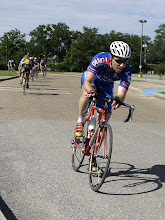Movement indicates form
I don't know if you watched the marathon event on the Olympics this year or not. In some ways, I'm surprised that a network would show a marathon from start to finish. On the other hand, it provided me with an interesting opportunity. Studying movement is one of my greatest interests. Watching the way someone moves, indicates to me the effectiveness of the athlete. During the ladies marathon, I would watch various runners as they started to develop changes in their form. Maybe it was the way the swing their arms or the amount of rotation in their trunk. Other runners would begin to develop changed in their stride. I characterized these movements as "noisy". Conversely, I would observe the runners that were "quiet". These runners were smooth and fluid. There movement pattern was balanced so that it delivered the maximum effort in the direction they were running and other "non-productive" movements were minimized or absent.
As the marathon progressed and fatigue set in, runners would develop noisy running patterns. Then, on the next camera shot, they would begin to fade away. It was like an ever steepening slope of destruction. Poor movement patterns accelerate fatigue and causing more noise which causes more fatigue and so on and so on.... Then, "pop", the parties over.
The same thing occurs in cycling. Movement is an indication of form. On the road, this movement is noted in the line of the bike as well as side to side and rotation movements of the legs. All of these movements affect the center of gravity of the rider. As the center of gravity changes, the direction of the bike changes. With the bike on a trainer, the rider moves much more with poor form. Since the bike is essentially locked to the ground, it can't move underneath and all unresolved forces present themselves in the rider. It reminds me of the scene from "How the Grinch Stole Christmas". "All the Noise, noise, noise, noise, noise!"
In a perfect world or a perfect pedal stroke, all the force would be delivered to the cranks. Other forces would be balanced so that the rider is stable in the saddle.
Next time you are on the road, take note of the noisy riders. Here's my recommendation. Stay away from them because they cause wrecks. Most of the time, they self destruct because they are producing a lot of non-productive force.
Next time you are on the trainer, if you are not able to ride quietly, you have technique issues that need help. Making these changes towards effectiveness with make you faster.

